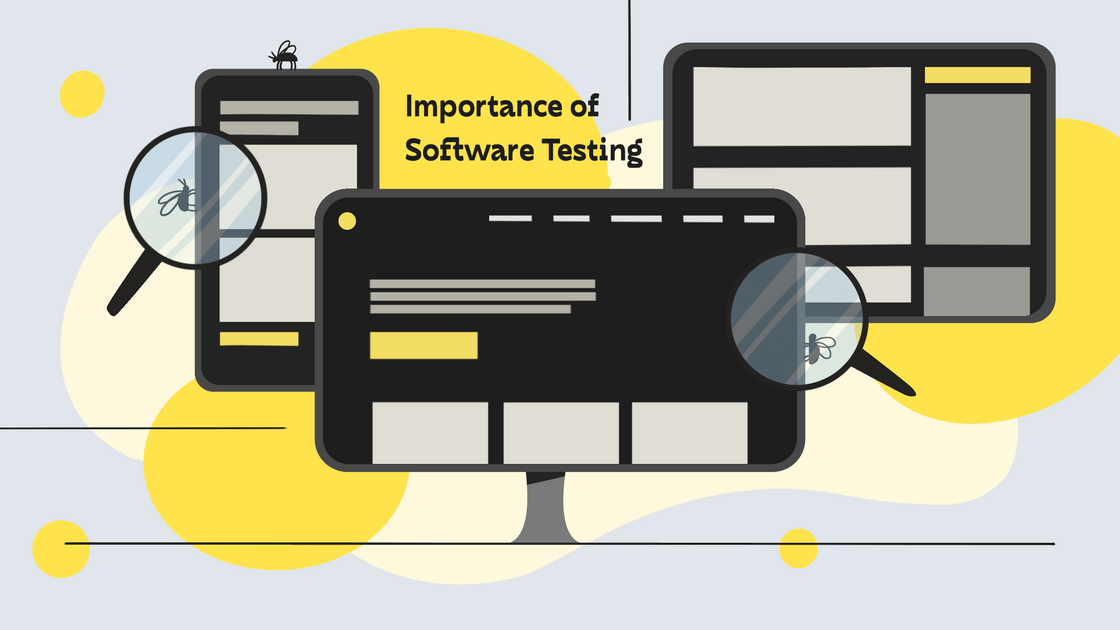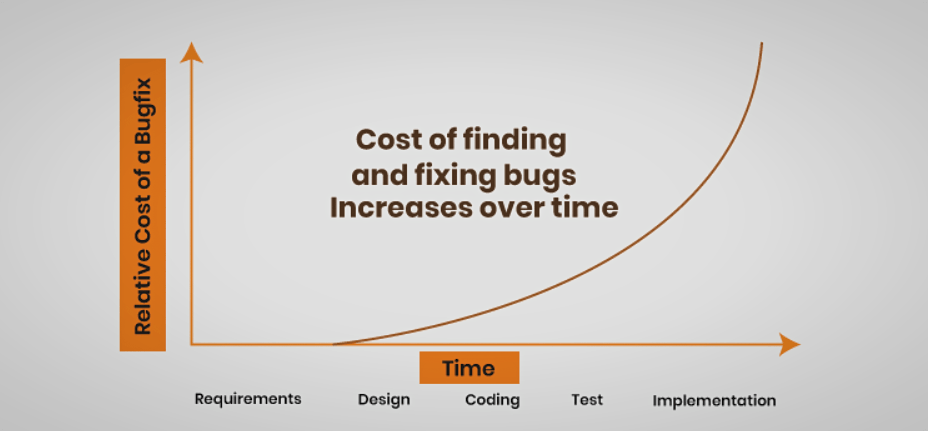The Importance of Software Testing
Author
Katarina Draganjac
Date
Category
Development

Software testing is the process of checking software applications and products for bugs and errors to ensure their performance. Testing is a fundamental process of creating reliable and usable software products. It is the process of evaluating and verifying that a software application is working as expected. Testing will identify defects, reduce flaws, and increase the overall quality of the system.
Everyone can make mistakes, so testing is necessary because it helps us identify bugs or errors early, so that they can be fixed before the application is delivered to the client. Defects can damage a company's reputation, leading to lost customers. Properly tested software ensures security, high performance, and dependability, which leads to money and time savings, as well as customer satisfaction.
Testing in the software development life cycle
Software testing has traditionally been separated from the rest of development. It is often conducted later in the software development life cycle, after the product build or execution stage. Then, if defects are found, there isn't much time left for fixing or retesting. Therefore, many development teams now use a methodology known as continuous testing, which means that development and testing collaborate over the entire product life cycle. With this testing technique, teams don't need to wait for the software to be built before testing starts. They can run tests much earlier in the cycle to discover defects sooner, when they are easier to fix.
To achieve the maximum benefits of testing, it should be applied to every stage of the project. The following gives you a look at how testing can contribute to the success of the overall project:
- Involvement in the requirement analysis phase - involving testers in this phase ensures identification of some of the defects even before their implementation. Also, the tester gains significant project insight at this stage, which helps him later in the execution phase.
- Involvement in the design phase - involving testers in this phase will also increase their understanding of each part of the design, as well as help in reducing the risk of fundamental design flaws.
- Involvement in the development phase - enables testers to do more efficient testing against customer requirements, thereby reducing the risk of defect slippage. Testers also become aware of the areas that are considered risky by the developers, so they can adjust their priorities accordingly.
- Testing before deployment - enables testers to verify and validate the software before its release. All errors that may have gone unnoticed before can be detected in this phase. The execution of tests at various levels increases the likelihood that the software will have fewer errors and also meet the customer's needs.

The Advantages of Testing
Here are the top reasons why software testing is important:
- Product quality - Products always serve users, so it's very important that they deliver the values they promise. Hence, they should work properly to ensure a great customer experience. Following product requirements is imperative because it helps you get the wanted results.
- Security - there are a bunch of situations in which the information and details of the users are stolen. Therefore, people look for all-tested and reliable products. Testing will ensure that the user gets a trustworthy product, keep the user's personal information and data safe, and provide vulnerability-free products.
- Customer satisfaction - the first impression is really important, and if you fail at it, users are going to find another product that will accomplish all their requirements. One reason why apps should be tested is to provide the best user experience possible. Being the best product in the market will help you gain trust-worthy clients, which will have great long-term effects.
- Cost effectiveness - including testing in your project can save money in the long run. Software development consists of many stages, and if bugs are caught in the earlier phases, it costs much less to fix them. That is why it is important to start with testing as soon as possible.

Conclusion
It's perfectly normal to find bugs and errors in the software, and in the testing stage, they harm no one. However, if they are left unaddressed, they can lead to serious issues for everyone involved in the process of software design and development. If you incorporate testing, software becomes as error-free as it can be.
However, an important thing to remember is that testing reduces the probability of undiscovered defects remaining in the software, but even if no defects are found, testing is not a proof of correctness. Testing all combinations of inputs and preconditions is not achievable except for trivial cases.
Despite that, software testing is still a crucial component of the application development process because it improves consistency and performance. The main benefit of testing is the identification and removal of errors. Furthermore, testing also helps developers and testers compare actual and expected results in order to improve quality.